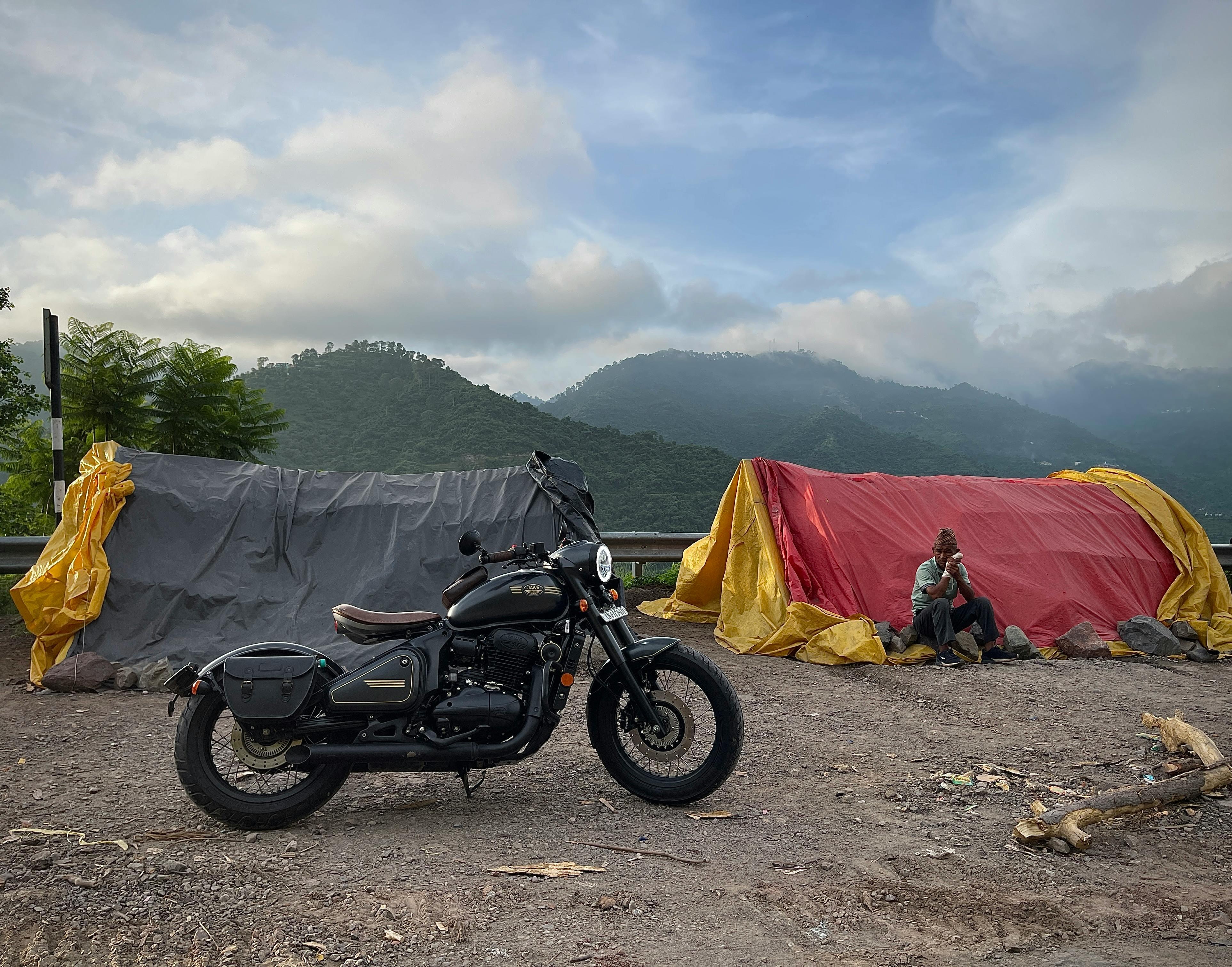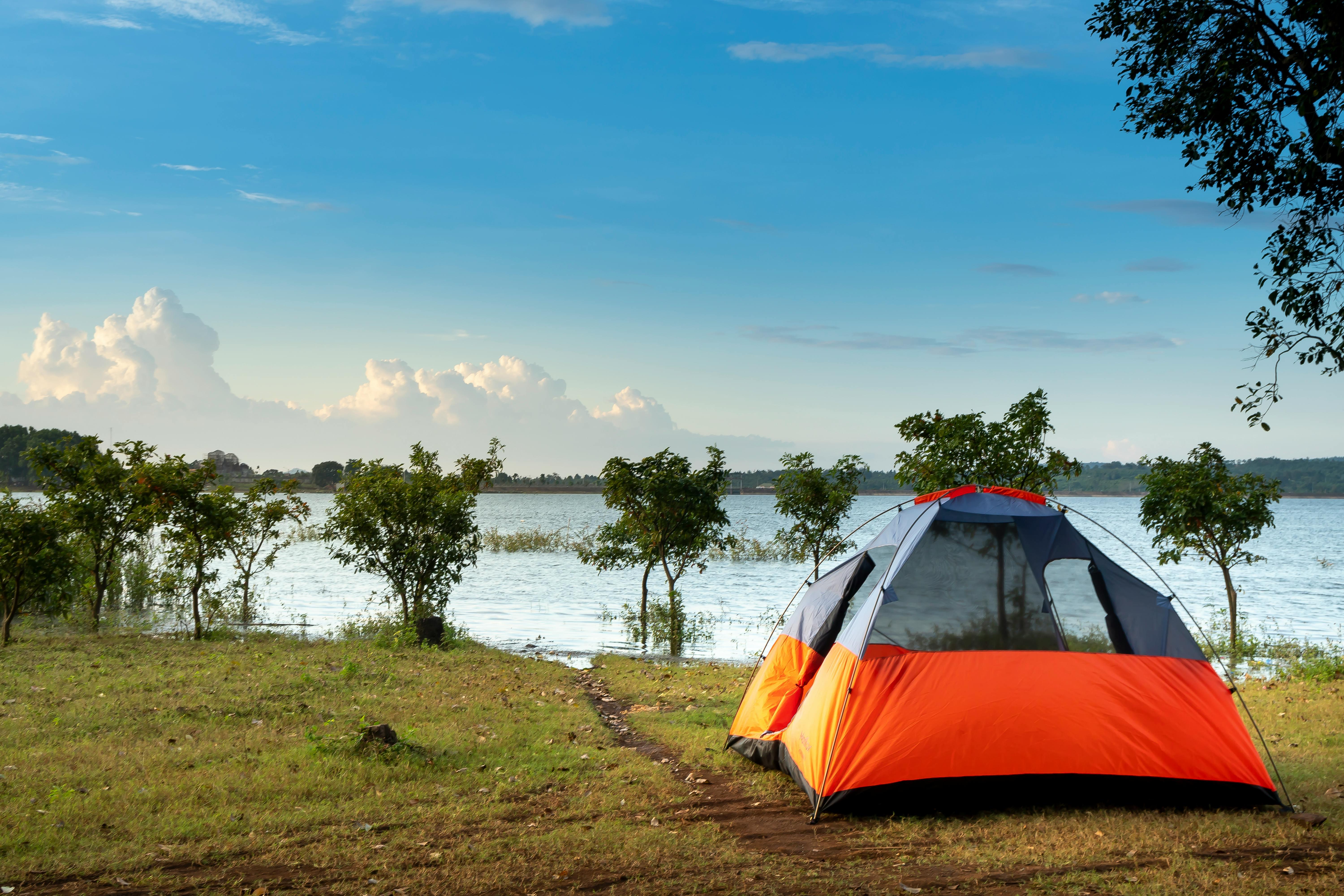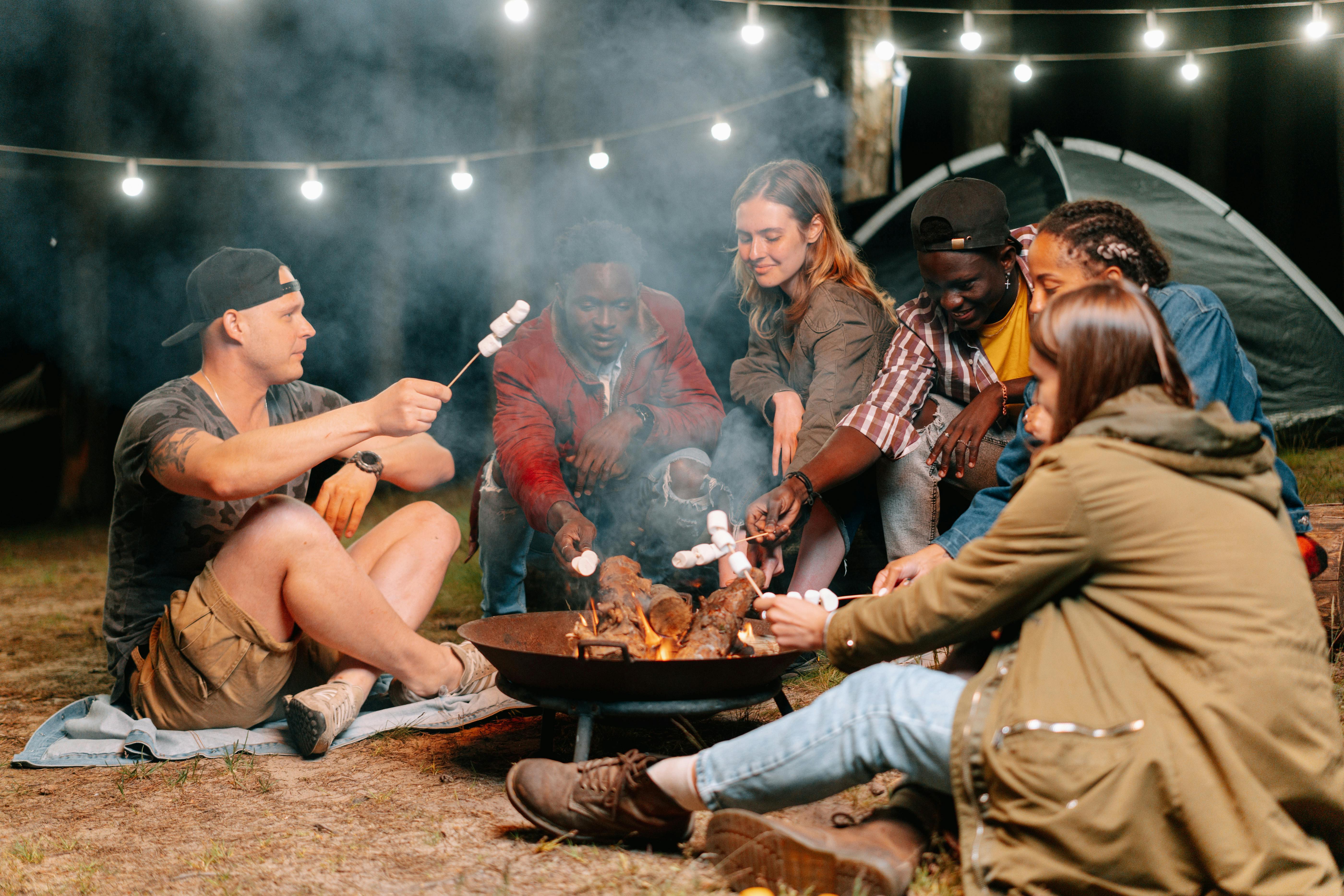Search for yoga retreats
Discover yoga retreats, holidays, and courses from worldwide.
The call of the open road resonates deeply with adventure seekers. Imagine this: crisp air whips through your hair, the rhythmic rumble of your engine becomes a meditation mantra, and your destination - a secluded campsite bathed in the soft glow of a million stars. Motorcycle camping offers the ultimate escape, ditching the confines of noisy motels for a soul-stirring connection with nature. For yogis, this journey becomes a chance to deepen your practice amidst the breathtaking beauty of the wilderness.
So, you've decided to embark on a transformative motorcycle camping adventure? Welcome to the enlightened path! Motorcycle touring and camping are a natural fit for yoga enthusiasts. Two wheels grant the freedom to truly experience the journey, feeling the raw power of nature and the thrill of the open road. Why sever this connection by holing up in a stuffy hotel room? Pack your tent and embrace the majesty of a billion-star yoga studio under the vast expanse of the night sky.
If you're opting for a guided motorcycle tour, you'll want to prepare your trusty steed beforehand. A little prep can mean the difference between a dream trip and a disaster. But don't worry, this doesn't require a bank-breaking investment in fancy equipment. Start simple, with the essentials, and savor the liberating simplicity that the great outdoors offers.

Luggage Essentials: Pack Smart, Ride Safe
Sure, you could just toss everything in a plastic bag and strap it on, but the type of luggage you choose significantly impacts your comfort and safety. Here's a breakdown of the three main contenders: hard luggage, leather luggage, and textile luggage. They all keep your gear protected from the elements and secure on your bike, but each has its own strengths and weaknesses.
- Hard Luggage: Crafted from plastic, fiberglass, or aluminum, hard luggage boasts secure mounting systems and the convenience of quick detachment and lockable closures. Just turn the key, and you're ready to explore. However, this comes at a price - hard cases can be expensive and susceptible to damage from impacts.
- Leather Luggage: For a timeless touch, there's nothing quite like classic leather luggage. It complements the aesthetics of a cruiser or vintage bike beautifully. Modern designs offer mounting systems similar to hard luggage. However, keeping leather looking its best requires special care and maintenance.
- Textile Luggage: The reigning champion of motorcycle touring luggage, textile bags are known for their durability, water resistance, ease of mounting, and budget-friendly price tags. Unlike hard luggage, they're less likely to be damaged in a tip-over and require no special upkeep like leather.
Before you start strapping down your bags, consult your motorcycle's user manual to determine its payload capacity. Never overload your bike! Ensure everything is packed low, well-balanced, and securely fastened. Distribute weight evenly - don't cram all the heavy stuff into one saddlebag. And lastly, always pack your rain gear on top for easy access.
Finding Your Perfect Shelter: A Tent for Every Asana
The world of tents can be overwhelming, with options ranging from family tents to expedition tents to backpacking tents. But fret not, we'll simplify the selection process! Here are the key considerations:
- Size Matters: Your tent should cater to both your camping needs and the packing capacity of your motorcycle.
- Easy Assembly: Imagine setting up camp after a long day on the road - the last thing you want is to wrestle with a complicated, multi-step process. Opt for a tent that's quick and easy to pitch.

The Tent Lineup
- Family Tents: These familiar dome-shaped tents likely graced your childhood camping trips. Depending on your group size, you can find options ranging from two-person to six-person capacities. Widely available and budget-friendly, they might be tempting. However, remember they're designed for car camping, where weight and size aren't major concerns. Consider splitting the load among your companions if you choose this route.
- Expedition Tents: For motorcycle camping, expedition tents are a top choice. They typically feature two sections: a sleeping area for two to three people and a vestibule. This versatile space provides shelter for cooking, eating during inclement weather, storing gear, and even housing your motorcycle (think of it as a mini-garage!).
- Backpacking Tents: Lightweight, compact, and adaptable, backpacking tents are ideal for solo riders or those planning short, single-night stays. While they pack down small, the interior space is limited.
Beyond the Tent: Alternative Shelters
Some motorcycle campers opt for a more minimalist approach. They might string up a bivy sack (also known as a bivouac sack). It's essentially a waterproof shell just big enough to encase your sleeping bag, offering basic shelter but sacrificing comfort in wet weather. However, it creates a surprisingly lightweight and portable option, freeing up space for your yoga mat, which is an essential for any yogi on the road.
Unfold Your Practice: Embrace the Freedom of Yoga on the Road
Unlike bulky gym equipment, your yoga mat is the ultimate portable fitness companion. Unroll it anywhere - on a grassy meadow bathed in morning sunlight, on a secluded beach listening to the rhythm of the waves, or even in the spacious vestibule of your expedition tent. The great outdoors becomes your yoga studio, offering a unique and ever-changing backdrop for your practice.
Asana Inspiration: Poses for Every Terrain
- Sun salutations (Surya Namaskar): This foundational sequence is a perfect way to greet the sunrise and energize your body for the day ahead. No matter the terrain you choose, sun salutations can be practiced almost anywhere.
- Mountain Pose (Tadasana): Find your center and root yourself in the present moment with this grounding pose. Breathe deeply and feel the connection between your body and the earth beneath you.
- Warrior Poses (Virabhadrasana I & II): Channel your inner strength and warrior spirit with these powerful poses. Whether you're practicing on a sandy beach or a rocky mountaintop, Warrior poses allow you to embody the courage and resilience needed for any adventure.
- Tree Pose (Vrksasana): Challenge your balance and focus with this grounding pose. As you find your stillness, take in the beauty of the surrounding landscape.
- Downward-Facing Dog (Adho Mukha Svanasana): This restorative inversion pose helps improve circulation and elongate the spine. Perfect after a long day on the road, Downward-Facing Dog allows you to release tension and find a sense of calm.

Beyond the Asana: Meditation and Mindfulness
Yoga is more than just physical postures. Motorcycle camping offers a unique opportunity to deepen your meditation practice. The quiet solitude of nature provides the perfect environment to focus inward and connect with your breath. Listen to the sounds of the wind rustling through the leaves, the gentle babbling of a stream, or the rhythmic chirping of birds. Allow these natural sounds to become your meditation mantra, guiding you towards a state of inner peace.
Remember to Breathe: Pranayama Practices for the Open Road
Taking a mindful approach to your breath is a cornerstone of yoga practice. While riding your motorcycle, incorporate simple breathing exercises to stay focused and present in the moment. Try alternate nostril breathing (Nadi Shodhana) to calm your mind and reduce stress, or box breathing (sama vritti) to maintain focus and alertness during long stretches on the road.
Rest and Recharge: The Importance of Sleep
As with any adventure, a good night's sleep is crucial for a successful motorcycle camping trip. Even on scorching days, nights can turn surprisingly chilly, and nobody enjoys shivering all night in their motorcycle jacket. Sleeping bags come with two key temperature ratings to help you choose the right one for your needs.
Finding Your Comfort Zone: Sleep Like a Champ (Even on the Road)
When it comes to insulation, goose down reigns supreme, outperforming any synthetic material. However, it's pricier, and when wet, it loses its ability to loft and trap heat effectively. For most motorcycle camping adventures, a synthetic sleeping bag will do an excellent job of keeping you warm.
Mummy Bags vs. Rectangular Bags
- Mummy Bags: These form-fitting bags prioritize warmth by minimizing wasted space. However, they can feel restrictive for some people.
- Rectangular Bags: Offering more wiggle room, rectangular bags are ideal for those who value comfort over extreme warmth (unless you're planning frigid-weather camping).
No sleeping bag is complete without a sleeping pad for cushioning and insulation. These come in a variety of options, from budget-friendly closed-cell foam pads to luxurious self-inflating pads and air pads. Comfort is subjective, so choose the pad that best suits your needs.
Fueling Your Adventures: The Art of Camp Cooking

As the saying goes, there's nothing quite like a meal cooked over a crackling campfire. But campfires aren't always an option. That's where the trusty backpacking stove comes in. These compact, lightweight wonders come in various shapes and sizes. Opt for a small, fuel-efficient stove that won't gobble up precious packing space. To ensure you don't run out of fuel mid-trip, pack a larger fuel canister and a spare just in case.
Beyond the Beyond the Essentials: Packing for the Unexpected (and Your Yoga Practice)
- Dress for the Conditions: Pack for the season, keeping in mind that weather can be unpredictable. Be prepared for both hot and cold days. And hey, if you're camping in the summer, don't forget your swimsuit! There's nothing more refreshing than a dip in a lake, river, or ocean after a long day on the road.
- Kick Off Those Boots: Pack a pair of comfortable camp shoes, whether it's flip-flops or lightweight sneakers. Your feet will thank you for the break from your motorcycle boots.
- Cleanliness is Key: A bar of soap and a quick-drying camping towel will keep you feeling fresh, even if your bathing options are limited to a river or a garden hose.
- Stay Connected (or Not): If you crave constant connectivity, consider investing in a portable solar charger to reduce your reliance on electricity. Another option is a charger that attaches to your motorcycle, keeping your devices juiced up as you ride.
- Be Prepared for Anything: A first-aid kit is a non-negotiable. Assemble your own kit, including medications for common ailments like headaches, upset stomachs, sunburns, and heatstroke.
- The Final Touches: Don't forget a flashlight with spare batteries, a water canister to stay hydrated, and insect repellent to keep pesky bugs at bay.
- Unroll Your Mat: Most importantly, pack your yoga mat! This essential tool allows you to maintain your practice and find moments of peace and rejuvenation throughout your journey.
The Open Road Awaits: Unplug, Unwind, and Unroll
Motorcycle camping with yoga isn't just a vacation; it's a transformational experience. Imagine this: the rhythmic rumble of your engine becomes a mantra, the vast expanse of the wilderness becomes your meditation hall, and the open road becomes your personal journey of self-discovery. So, pack your bags, roll out your yoga mat, and get ready to embark on an adventure that nourishes both your body and soul.
Whether you're a seasoned yogi or simply curious to explore the practice, motorcycle camping offers a unique opportunity to connect with nature, your breath, and your inner self. So, start planning your adventure, unleash your inner explorer, and get ready to unplug, unwind, and unroll on the open road!
Craving More Stories?
Join our ShopYogaRetreats newsletter for the latest updates on thrilling
destinations and inspirational tales, delivered straight to your inbox!
We value your privacy. Your email address will never be shared or published.
 English
English Deutsch
Deutsch Français
Français Nederlands
Nederlands Español
Español

